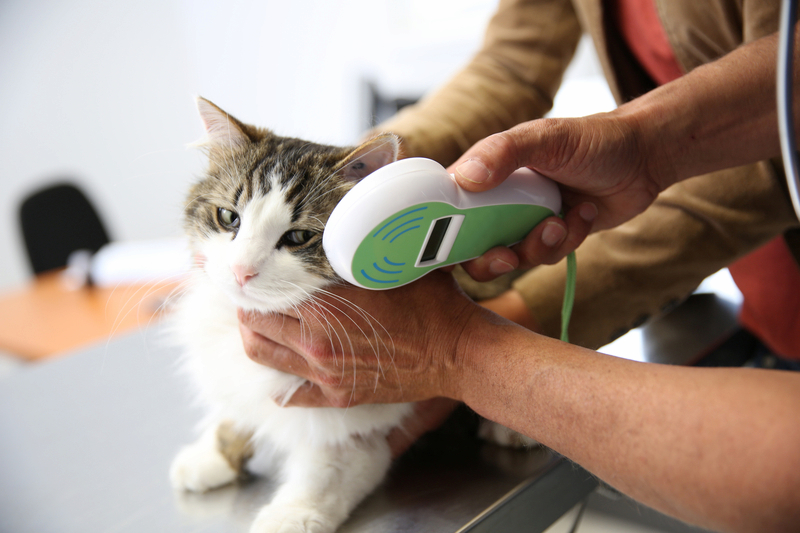As responsible pet owners, we welcome any new additions with the intention of giving them a long, happy life. But sadly, this isn’t guaranteed with the number of cats that unfortunately run away or are poached every year.
However, you needn’t panic as there are protective measures that can be taken to lessen the worry of a missing pet. Microchipping is a procedure that’s available for all cats at veterinary practices and offers a lifetime worth of protection once fitted. In one month’s time, it will be non-negotiable to have a microchip implanted in your cat in the UK.
When Does Cat Microchipping Become Law UK?
As of June 10th 2024, it will be a legal requirement for UK pet owners to have their cats microchipped. According to the CATS Report 2023, an estimated 3 million (27%) cats remain unchipped, delaying thousands of lost and stray felines from reuniting with their owners. The introduction of mandatory microchipping should reassure owners who are missing a cat, that there is a good chance their pet could be returned home safely upon the discovery of their chip.
The new rules state that cats must be ingrained with the microchip before they are 20 weeks old, which can be registered through the manufacturer of the microchip or a veterinary practice. Any owners who fail to adhere to this by June 10th will have 21 days to get one implanted, otherwise they may face fines up to £500. For the owners who already have their cat microchipped, it’s just a case of keeping the information saved in the database up to date.
Any changes to your contact details, such as a new address or phone number, need to be forwarded to the microchip database company straight away. This is essential for the accuracy of your data stored on file. If your registered details are not the newest version, you may not be alerted in the discovery of your missing pet.
Compulsory cat microchipping follows a Government call for evidence and consultation, in which 99% of respondents expressed their support for the legislation. This represents the country’s commitment to improving the welfare and conservation of animals within UK homes, placing cats and dogs on a level playing field in terms of protection and identification possibilities.
However, microchipping will not be mandatory for free living cats that live with little or no human interaction or dependency, such as farm, feral or community cats.
How can you tell if a cat is microchipped?
Once a microchip is implanted, a unique code can be detected by a microchip scanner. It doesn’t contain a GPS system, but simply a set of owner details linking to the pet’s identification number. Vets, dog wardens, rescue centres and animal welfare organisations usually have the equipment to scan lost, stolen or stray cats for microchips.
Occasionally, you can feel a cat’s microchip but it’s not the most effective way of identifying one. If you wanted to feel for one as an added precaution, the chip can be found in between the shoulder blades under the skin. Locating the chip by hand doesn’t always work due to its small size and deep placement, but this isn’t to say the cat you’ve found doesn’t have one installed.
Using a scanner is a much better way of telling if a cat is microchipped. They are available to buy online and are the only devices capable of identifying microchips (smartphones and tablets can’t read them). For anyone who stumbles upon lost or stray cat, here is the correct way to scan for a microchip.

Do older cats have to be microchipped?
When the new microchipping law comes into effect in England, it will be a legal obligation for all cats over 20 weeks to be microchipped.
It makes sense to get your cat microchipped at the time they are spayed or neutered if you can. The anaesthesia from these procedures will prevent discomfort and save repeat trips to the vets. If for whatever reason you cat wasn’t microchipped early on, perhaps you adopted an older cat without one, it’s completely safe to get one implanted later in their life. Age limits do not apply to microchipping, but it’s best to get it done during their initial vet check-ups for maximised safety and convenience.
Cats spend a lot of their life outdoors, even when they are older. Unlike name tags or collars, microchips don’t fall off and don’t need to be replaced once inserted. They are the most effective and safest way of providing long term protection and identification without the risk of injury.
Do indoor cats need microchipping?
Whether your pet is an outdoor or indoor cat, they will need microchipping regardless. Even if your cat mainly stays in the house, they can still escape when windows and doors are left open or be stolen.
The 2023 Pet theft index found there was 1,076 cases of cat theft in the UK, making them the second most commonly stolen pet after dogs. That being said, microchipping should be taken as a precaution to protect your cat if they were to go missing. This applies for the pet’s that barely venture outside too, as leaving them unchipped is not worth the risk. Reuniting with your cat would be very difficult if they escaped and didn’t have a chip implanted.
Does microchipping hurt cats?
Microchipping is a quick procedure where a small chip the size of a rice grain is inserted under a cat’s skin, between their shoulder blades using a needle. Often compared to the feeling of an injection, it can cause a tiny bit of discomfort, but is over in a matter of seconds. Most cats don’t even realise it has been done as it is typically carried out under anaesthesia at the time of spaying or neutering.
A recovery period after microchipping is not necessary since it doesn’t hurt or cause your pet pain once it’s been fitted. It can essentially be forgotten about until it is required to track a missing cat.
How much is microchipping a cat?
You can expect to pay anywhere between £20 to £30 depending on where you live in the UK. Local vet’s, animal charities and rescue centres will help give you an exact price if you enquire about the cost of microchipping for your pet.
Some charities and reputable animal centres offer microchipping at a discounted rate or even for free. Back in 2017, the RSPCA hosted a free cat microchipping weekend event to raise awareness of the dangers of cat collars, and offered the service for just £10 before that.
If you adopt a cat from Cats Protection, the cost of microchipping your new pet is included in the adoption fee.
Updating the information attached to your pet’s microchip comes with a small fee, but how much is relative to the database company you’re registered with. Some request a one-off fee for the lifetime of your cat whereas others charge every time you wish to update the details.
Unsurprisingly, the cost-of-living crisis has impacted important Government services, like veterinary practices and the bills attached. Microchipping early on will set the main chunk of costs aside and help prevent further pet expenses troubling you in the event of a missing cat. With a microchip, your pet can be traced back to you much quicker and minimise their time of disappearance.





